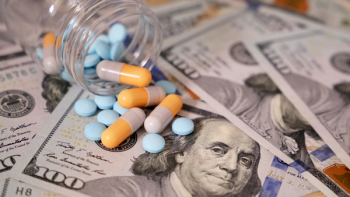
- Pharmaceutical Executive-09-01-2020
- Volume 40
- Issue 9
FDA in Hot Seat on ‘Buy American’ Drug Policy
Tasked with setting up framework for essential medicine program.
The White House initiative to encourage US production of essential medicines calls on FDA to set the parameters for and implement main aspects of the program. Under the executive order issued by President Trump Aug. 6, FDA first will determine which medicines fall under the program’s requirements. In addition, the agency will collect information from manufacturers on drug and ingredient origins and accelerate approval of qualifying products and their production facilities.
FDA had 30 days to draw up a list of “essential medicines, medical countermeasures, and their critical inputs”—i.e., active pharmaceutical ingredients (APIs) and other components—and another 60 days to finalize it. The list will cover therapies and medical products that the US “must have available” at all times, particularly treatments for infectious diseases and to protect against chemical, biological, radiological, and nuclear (CBRN) threats.
To ensure demand for domestically made medicines, federal agencies that purchase drugs, including the Department of Health and Human Services (HHS), the Department of Defense and the Department of Veterans Affairs, will develop plans in 90 days for steering procurement and contracts to those essential medicines produced at home. Those agencies will have to submit annual reports in 2021 on where they source these critical products. The US Trade Representative, moreover, will exclude those listed products from free trade agreements, while federal agencies will look to revise environmental and other regulations likely to inhibit construction of new pharmaceutical facilities in the US.
There are some notable exceptions to the program. The “Buy American” requirements won’t apply to medicines not available in sufficient quantities in the US, to US-made products that are 25% more expensive than imports; or in cases of a national emergency. At the same time, the new policies will aim to combat trade in counterfeit goods and protect intellectual property.
FDA also will seek to reduce supply chain vulnerabilities by collecting data on the sources of and shortages in critical drugs and medical devices and their ingredients, plus information on the date of a facility’s most recent inspection and the results of such inspections. To accomplish these goals, the agency will identify where new regulations or guidance are needed to collect production information and will negotiate with other countries to increase foreign inspections—including unannounced site visits—of firms producing essential medicines. And the government will limit imports from manufacturers that refuse or unreasonably delay an inspection.
At the same time, FDA will encourage pharma manufacturers to shift production to the US by offering accelerated approval of essential medicines made in the US, particularly those needed to counter infectious disease and CBRN threat preparedness. The agency will issue guidance on developing advanced manufacturing techniques for domestic production of essential therapies, while also looking to identify and propose changes in laws and regulations found to erect barriers to domestic production efforts.
Higher prices?
A main objection to the Buy American policy for pharmaceuticals is that domestically produced critical medicines are likely to be more expensive than those made overseas. Generic drug makers, in particular, acknowledge that APIs and drugs from China and India are cheaper than those made in the US and that government contracts for pharmaceuticals need to assume higher prices for American-made products.
In this light, the initiative to increase purchases from domestic producers runs counter to an earlier White House announcement advancing four drug price control initiatives, including an international reference pricing scheme for drugs and biologics. President Trump issued executive orders on July 24 that call for certain health centers to pass on price discounts on insulin and epinephrine and to allow drug imports from Canada and other countries, policies announced previously and already undergoing analysis for impact and implementation. Another proposal would reduce rebates paid to “middlemen” managing Medicare drug plans, which analysts say would raise premiums for beneficiaries. Trump again floated the idea of setting an international pricing index, or “most favored nation” policy, to link prices paid for Medicare Part B medicines to those paid overseas.
Jill Wechsler is Pharmaceutical Executive’s Washington Correspondent. She can be reached at jillwechsler7@gmail.com.
Articles in this issue
about 5 years ago
Our Launch-Time Menuabout 5 years ago
Drug Launch: Winning the Evidence Battleabout 5 years ago
COVID Causes Pharma Marketers to Watch TVabout 5 years ago
Succession Plan: Skyriziabout 5 years ago
New Standards for First-to-Launch Playersabout 5 years ago
(O)mega Opportunity: Vascepaabout 5 years ago
Educational Mission: Oxbrytaabout 5 years ago
First in Class: Spravatoabout 5 years ago
One Time for Lifetime: Zolgensmaabout 5 years ago
Biopharma Capital Markets Sizzle in 2020Newsletter
Lead with insight with the Pharmaceutical Executive newsletter, featuring strategic analysis, leadership trends, and market intelligence for biopharma decision-makers.





